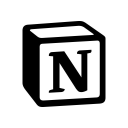How We Created A $8.5K/Month No-Code AMP Email Marketing Tool
Hello! Who are you and what business did you start?
Hello, I am Aquibur Rahman, Founder, and CEO of Mailmodo. I have been working as a marketer at various startups for 6 years before starting Mailmodo. My experience in marketing helped lay the foundation to starting Mailmodo.
Mailmodo is an email marketing software that enables marketers to send app-like interactive emails designed to improve email conversions, increase engagement and help businesses grow.
We launched the public version of Mailmodo in January 2021 and have accelerated to 100k+ ARR in just five months.

What's your backstory and how did you come up with the idea?
My career has revolved around marketing. Earlier, I was leading marketing at a large fintech in India. I realized that email is closely tied with all other growth metrics during my stint, so cracking email becomes important for businesses. It was this realization that drove me towards AMP emails. When Google announced the AMP Email for the Gmail app, I knew there was much potential in AMP emails for a marketer like me who wants to improve email conversions. I think it is one of the most innovative things that has happened to email since email first started.
As I explored the capabilities of AMP email I was in for a ride. This technology could allow email marketers to insert interactive elements like forms, accordions, dynamic data, and API, etc. inside emails without needing to open a new webpage.
I thought of the impact. If my subscribers could take action inside the email itself without moving to a different webpage, that would be a game-changer customer journey.
Finding the right people to build a team at an early stage isn’t easy, the risks are high and the money for hiring is low. That only cemented my belief about the importance of good relationships in the professional world.
However, I also discovered that using AMP emails is not easy for a marketer. AMP emails require coding, technical know-how to set up, in terms of sending configuration and whitelisting. None of the ESPs supported creating and sending AMP emails.
This gap in the Email marketing landscape set me on a journey that gave rise to Mailmodo. With Mailmodo, my aim of helping marketers get better conversions from email marketing using interactive widgets and forms within the email was fulfilled.

Take us through the process of designing, prototyping, and manufacturing your first product.
Our CTO, Devyesh, and I talked to marketers and email experts relentlessly in the initial months. We’d just discovered what AMP emails could mean for emails and we wanted to test our hypothesis. During this journey, we had to learn about the intricacies of AMP ourselves.
Initially, we hardcoded every email while consolidating our own learnings, and at the same time, we were educating the pilot customers about the benefits. Since convincing the early users of the potential of interactive emails was a challenge, we relied on testing and results to prove the effectiveness of AMP Emails over the traditional HTML emails.
Every week, we used to gather insights and work on the product roadmap, creating a blueprint of the product. Razorpay was our first client. We tested the performance of interactive emails on a sample of equivalent and similar email lists and demographics. We sent an equal number of interactive AMP emails and HTML emails. At the end of the test, we found that interactive emails have 3x more conversions and that’s how we validated our product idea.
After that, we started building our MVP. We brought together all the features of a regular ESP along with the power of AMP email. Our MVP had the following features:
- No-code creation and sending of both AMP and HTML emails
- Bulk emailing
- Email automation
- Transactional emails
- Contact list management

We had the idea to start Mailmodo in February 2020. We had our MVP by October 2020 and launched publicly in January 2021.
We doubled down on our product roadmap after the Razorpay pilot. We also created the blueprint of the product, detailing all the features that were needed.
Since launch, what has worked to attract and retain customers?
We launched Mailmodo with a strong and unique offering of enabling no-code interactive AMP emails, so most of our growth was product-led. Once we launched, the focus was to reach as many potential users as we could. While organic growth was central to our strategy, in the long run, we also knew we had to reach our early customers a lot sooner. Referrals from early adopters were the key to initial growth.

Launching our product on Product Hunt was one of the main avenues that gave us the mileage. It was a quick way to get our product under the radar of savvy marketers and techies. It not only gave us a lot of exposure, but we also received valuable feedback to make our product better.

We’ve also reached out to several email marketing forums and communities that helped similarly. We collaborated with email marketing influencers, participated in podcasts, Clubhouse rooms, and other networking events to actually make marketers aware of what we’re building.
Coming to organic growth, content and SEO are the main focus for us in the coming months. We want our potential customers to know the scope and benefits of AMP, the use cases of how it helps their problem statement according to their industry, and reap the benefits of what we’ve created.

Our sales and customer success teams have been very active and on their feet to help and convert companies to interactive emails.
Validating the idea and finding the market fit is more important than entrepreneurs realize. That’s one of the primary reasons why not every startup makes it. I’d definitely recommend spending more time and effort on validating your idea and evaluating the product-market fit.
Like any good product, we aim to keep adding more features and integrations that can help our users make the best out of the product.
How are you doing today and what does the future look like?
We recently crossed 100k ARR. Having said that, we still have a long way to go. In fact, we aim to onboard 5000 customers in 2021 and reach a 1 Million ARR figure.
We’re also looking at vertical growth, adding features and integrations to support different industries and use cases. Our mission is to create brand awareness and develop a very strong email marketing suite with a focus on interactivity inside emails.
Through starting the business, have you learned anything particularly helpful or advantageous?
One of the best decisions I’ve made along with my co-founders was to startup when we did. We grabbed the opportunity with AMP, we believed that it can change the future of email, believing and going after it was the best decision we made.
We had a unique opportunity to change the email marketing landscape with AMP. We’re one of the few ESPs that support AMP and definitely the only one that is a marketer-friendly, no-code platform. We’ve quickly integrated every functionality needed on the email marketing spectrum to become a comprehensive tool.
I have to admit, we could have launched our MVP a lot sooner than we had, and I’d count that as a poor decision or a missed opportunity. We waited until we had a perfect version of the product, though an MVP. We could have failed fast, learned faster, and iterated much more, had we done that.
Also, finding the right people to build a team at an early stage isn’t easy, the risks are high and the money for hiring is low. It was one of the challenges we faced initially. That only cemented my belief about the importance of good relationships in the professional world.
I consider people and relationships as one of the most important abilities that I’ve grown into. It is people who believe in your idea before there is growth or revenue. People who believe in your vision to build it with you and people who believe in your product to invest in it.
Coming to habits, I started getting a lot more organized since I’ve begun my journey as an entrepreneur. There is only so much time and so many things I could be doing. I make it a habit to put everything on the calendar. That gives accountability and increases productivity.
What platform/tools do you use for your business?
With work becoming virtual, we’re using a lot of tools to keep everyone up to date and informed. It’s made us very organized.
- Communication: Slack, Hangouts
- Video conferencing: Meet
- Project management and collaboration: Asana, G Suite, Figma, Whimsical, Airtable
- Notes: Notion, Workflowy
- CMS: Strapi
- Web analytics: Google Analytics, Search Console, Intercom
- Emails: Mailmodo
What have been the most influential books, podcasts, or other resources?
Two of my favorite marketing reads are High Growth Handbook by Elad Gil and Simon Sinek’s Start With Why.
High Growth Handbook is exactly what it promises to be, essentially a guide to scaling startups. It goes into strategies as well as very useful tactical advice from an early stage to a growth stage company.
Start with Why brings together the essence common to both good leadership and great organizations- the purpose that drives them.
Advice for other entrepreneurs who want to get started or are just starting?
There are three key areas of focus for budding entrepreneurs, and not necessarily in the same order.
Product: Your product or service obviously needs a strong value proposition. Not all ideas and avenues lead to good products. Validating the idea and finding the market fit is more important than entrepreneurs realize.
There’s nothing to lose, the journey in itself has a lot of learnings. But that’s one of the primary reasons why not every startup makes it. I’d definitely recommend spending more time and effort on validating your idea and evaluating the product-market fit.
People: Your team makes or breaks your startup. Initially, there are a handful of like-minded individuals when starting up, but as you grow, that doesn’t continue to be the case. In an attempt to race to MVP, team building doesn’t get the same kind of attention. That’s a common mistake.
It is the team that implements and executes the vision, breaking it into short team goals and achievable, ensuring that the targets are met. No matter which tracks you pick, the team gets you to the finish line of turning the vision into reality.
Possibilities: A good product is a proof in itself that you explore and seize opportunities. That has to continue. Adapting and pivoting through iterations is how good products are created and continue to stay relevant.
Never get too set in ways and plans to ignore possibilities. To improve the product, market effectively, communicate or serve your customers better, etc.
Are you looking to hire for certain positions right now?
We’re hiring for several key roles in tech and sales.
- Manager - Sales, US
- Senior Software Engineer (Backend)
- Senior Software Engineer (Frontend)
- UX Designer
Where can we go to learn more?
If you have any questions or comments, drop a comment below!

Download the report and join our email newsletter packed with business ideas and money-making opportunities, backed by real-life case studies.

Download the report and join our email newsletter packed with business ideas and money-making opportunities, backed by real-life case studies.

Download the report and join our email newsletter packed with business ideas and money-making opportunities, backed by real-life case studies.

Download the report and join our email newsletter packed with business ideas and money-making opportunities, backed by real-life case studies.

Download the report and join our email newsletter packed with business ideas and money-making opportunities, backed by real-life case studies.

Download the report and join our email newsletter packed with business ideas and money-making opportunities, backed by real-life case studies.

Download the report and join our email newsletter packed with business ideas and money-making opportunities, backed by real-life case studies.

Download the report and join our email newsletter packed with business ideas and money-making opportunities, backed by real-life case studies.
















